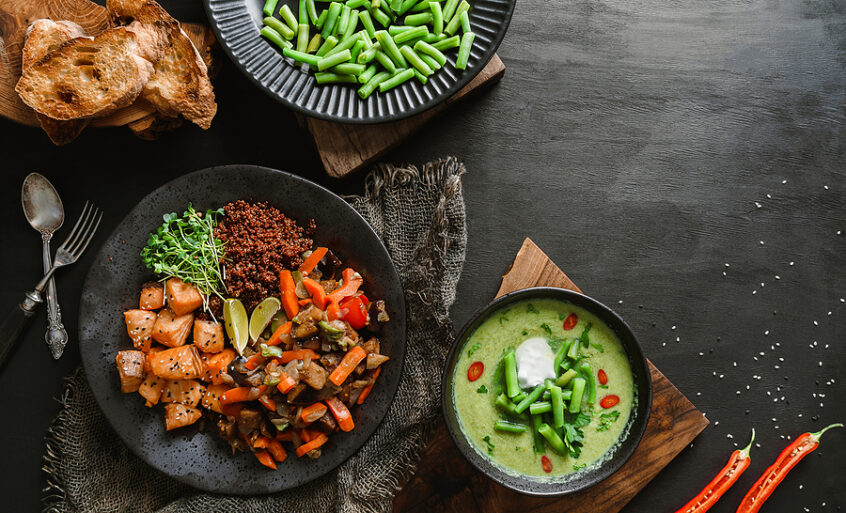Kari Collett, RDN, LDN, CLT with A to Zinc Nutrition, LLC
Which way is better?
Many believe that to attain the full nutrient potential of foods, they must be eaten raw. There might be a sliver truth to this idea with certain foods. But nearly all human cultures have evolved and sustained the test of time by incorporating at least some cooked foods into their diets.
Incorporating raw foods in your diet is good. But to eat ONLY raw foods is extreme. Exclusive raw food diets can be lacking in key nutrients and are not very sustainable. There are a few reasons why people cook foods. Let’s explore each of them.
Cooking makes foods easier to digest.
Especially when it comes to vegetables, cooking softens the cellulose and hemicellulose, or fiber in the plant. Softening the fiber allows nutrients in the vegetables to become more available for absorption. It also makes the vegetable less likely to cause gas. Unsoftened fiber does a great job of feeding the gut microbiome – but sometimes it’s just too much – resulting in excess gas.
Furthermore, there are several foods that can’t be digested if they’re not cooked. Potatoes, grains, and beans are prime examples. Potatoes are loaded with resistant starch. It’s not exactly fiber, but it does resist digestion! Beans and grains are covered with outward shells that protect the fragile seed inside that can’t be digested without cooking. You won’t get any nutrition, or pleasure for that matter, if you try to eat those foods raw.
Improve nutrient availability with cooking.
With some vegetables, cooking actually increases the variety of nutrients available in the digestive tract. Onions are a great example. Onions contain high amounts of sulfur compounds that, while necessary for good health, can sometimes cause negative reactions in people. By cooking slowly for even just a few minutes, the sulfur compounds are broken down allowing for their release and absorption with less risk of adverse reactions.
Cooking increases the availability of lycopene in tomatoes as another example. Cooking breaks down the cellular matrix in a tomato that releases lycopene. The heat also converts the type of lycopene from the “trans” form to the “cis” form, making it more absorbable.
Cooked foods taste great!
When healthy cooking practices are applied, foods can taste amazing. When foods taste good, we’re more likely to eat them more often. This is especially true with vegetables. Vegetables that are lightly steamed or quick stir-fried, have a slight tenderness that makes them easy to eat but are still nutritious. When warm, vegetables can be tossed with a little olive oil, lemon, and seasoning making them even more delicious and nutritious.
Think safety.
Many foods are cooked primarily for the purpose of limiting risk of ingesting disease-causing bacteria such as E. coli and Salmonella. This is especially true for meats and eggs. Various animal proteins must reach different cooking temperatures to be considered likely safe for consumption. Our current food supply generally carries greater risk than in the past due to crowded animal growing conditions and bulk processing methods.
We mentioned beans earlier being better to eat cooked for digestion, but they are also better cooked to eliminate toxins. Legumes contain naturally occurring chemicals that can be harmful to people such as lectins, phytic acid, trypsin inhibitor, and more.
Eat both.
Eating both raw and cooked vegetables is the best approach to ensuring nutrient absorption, pleasure optimization, and good digestion. Some raw vegetables have nutrients that may be destroyed with cooking and most raw foods have active enzymes that support digestion as well. Most other animals thrive on raw diets; humans are the only animal that cooks its food. But totally raw diets are difficult and lacking in many supportive factors. A mix at every meal provides the best qualities of both!
To learn more about optimizing your diet plan, schedule a free Discovery Call: https://atozincnutrition.com/schedule/

